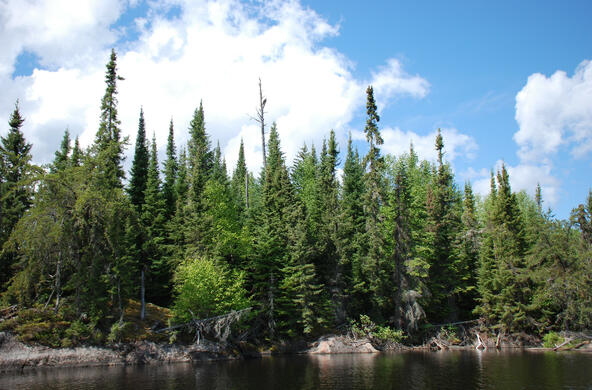During the past couple of years, I've met a lot of people in New England who are concerned about the new prevalence of ticks and Lyme disease. Most of them point out that ticks were rare just a few years ago. When we first moved to Maine, we walked in our meadows with impunity. Now we check ourselves when we get home. A few weeks ago, I got a call from a visitor to Deer Island in New Brunswick. His dogs had contracted Lyme disease, and he wondered why and what to do. How did this new plague arise?
By themselves, ticks are ugly. But they also carry and transmit Lyme disease, which if left untreated is a pernicious, multifaceted, and chronic syndrome for humans. Across the U.S. there are more than 400,000 cases of tick-borne diseases each year.
Several hypotheses may explain the new-found occurrence of ticks in New England. Work by Rick Ostfeld at the Cary Institute of Ecosystem Studies in Millbrook, New York has linked the prevalence of ticks in any particular year to the abundance of field mice the year before. The abundance of field mice is in turn related to the abundance of acorns two years before. It seems that abundant food (acorns) enhances the mouse population, which harbors ticks and promotes their attack on humans. In some areas, 92% of the white-footed mice are infected with the Lyme disease bacteria and serve as an effective reservoir for ticks to transfer the infection to humans. Despite popular belief, white-tailed deer don't seem to be involved and wild turkeys and opossums actually reduce tick abundance.
Climate change is a likely culprit in this pathway, inasmuch as the abundance of oak trees and thus acorns is predicted to increase with warmer temperatures and increasing drought in New England. Ticks also do better in longer, warm summers.
However you feel about climate change, there is little doubt and much worry about the spread of ticks and Lyme disease northward. Another economic cost for humans in a rapidly changing world.
References
Leighton, P.A., J.K. Koffi, Y. Pelcat, L.R. Lindsay, and M.H. Ogen. 2012. Predicting the speed of tick invasion: an empirical model of range expansion for the Lyme disease vector, Ixodes scapularis in Canada. Journal of Applied Ecology 49: 457-464.
Levi, T., F. Keesing, K. Oggenfuss, and R.S. Ostfeld. 2015. Accelerated phenology of blacklegged ticks under climate warming. Philosophical Transactions of the Royal Society, Biological Sciences 370: doi: 10.1098/rstb.2013.0556
Ninemets, U. and F. Valladares. 2006. Tolerance to shade, drought, and waterlogging of temperate northern hemisphere trees and shrubs. Ecological Monographs 76: 521-547.
Ostfeld, R.S., C.D. Canham, K. Oggenfuss, R.J. , Winchcombe, and F. Keesing. 2006. Climate, deer, rodents, and acorns as determinants of variation in Lyme disease risk. PLoS Biology 4: 1058-1068.
Ostfeld, R.S. 2010. Lyme Disease. Oxford University Press.
Pfeiffer, M.B. 2018. Lyme: The first epidemic of climate change. Island Press.
Read further commentary about other environmental issues on Dr. Schlesinger's blog, Citizen Scientist.







